The best vegetable choppers of 2025, tested and reviewed
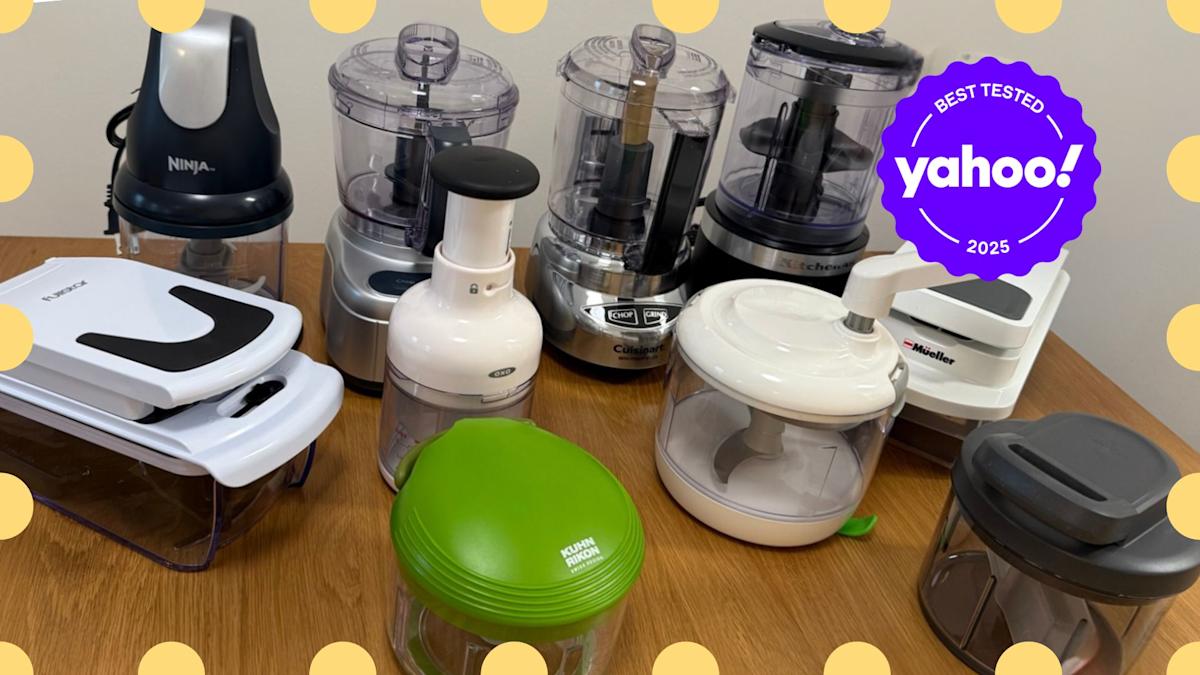
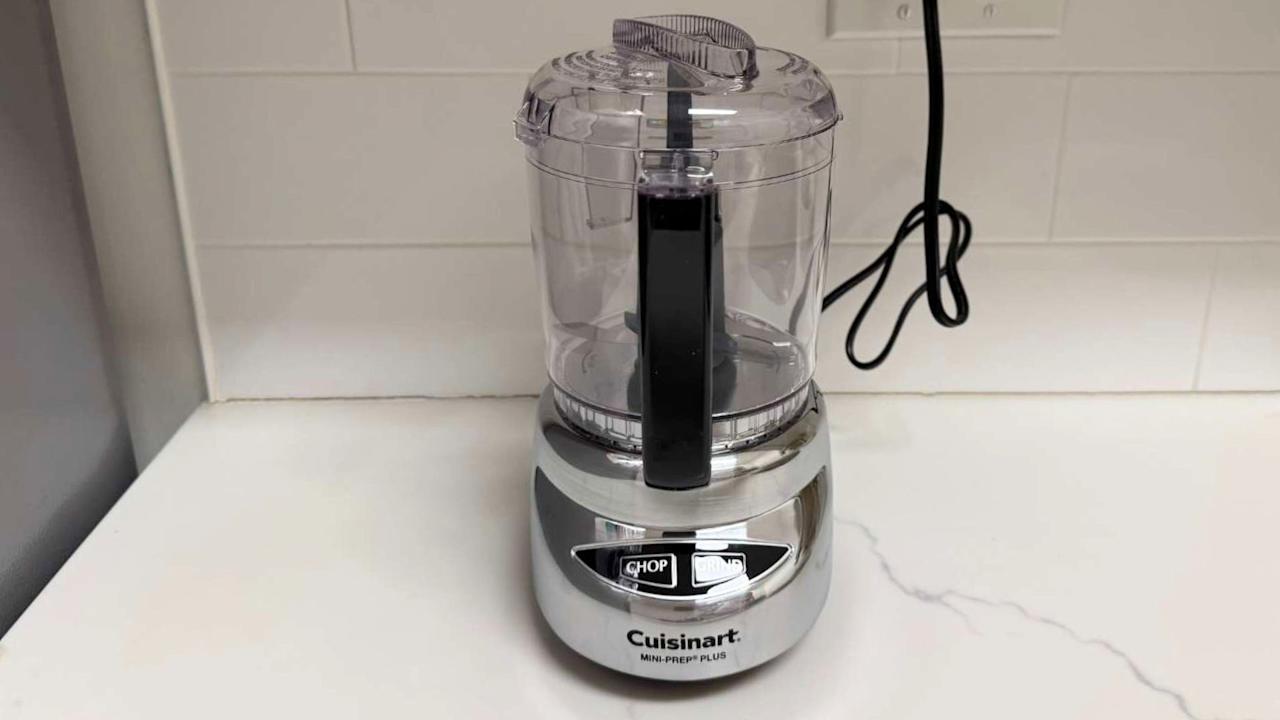
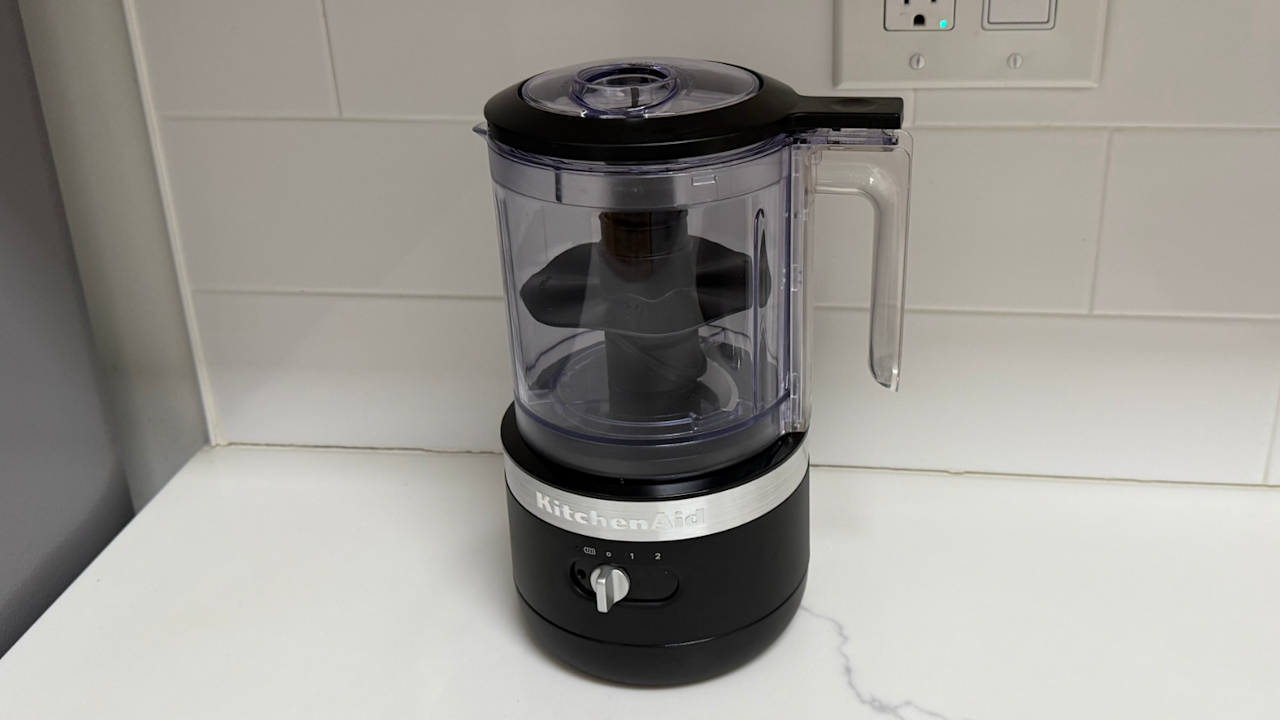

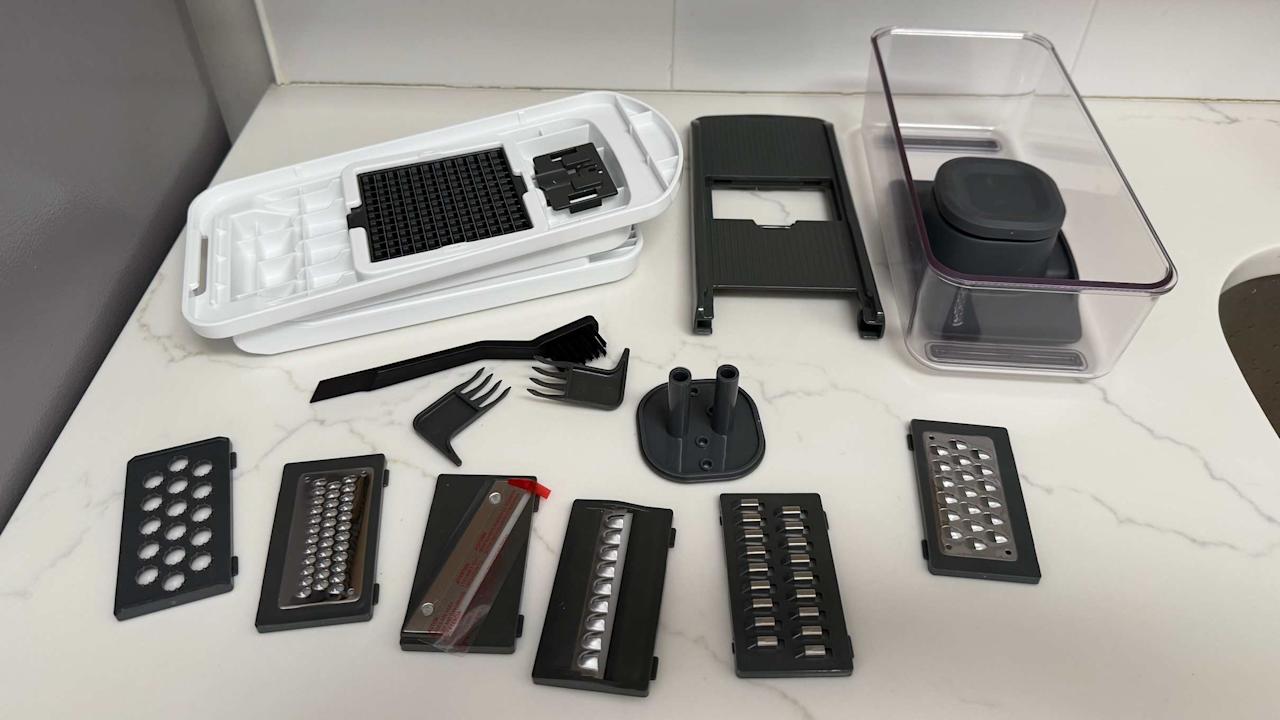


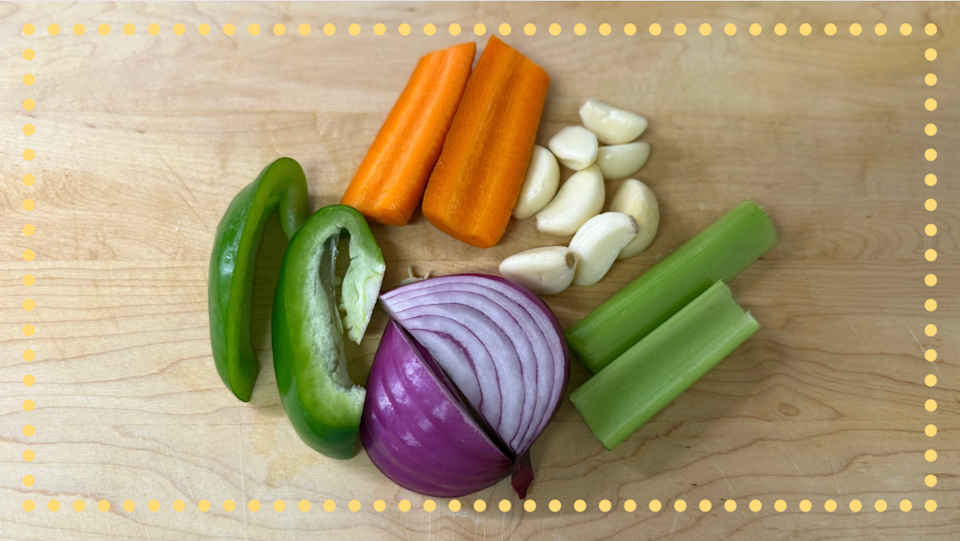
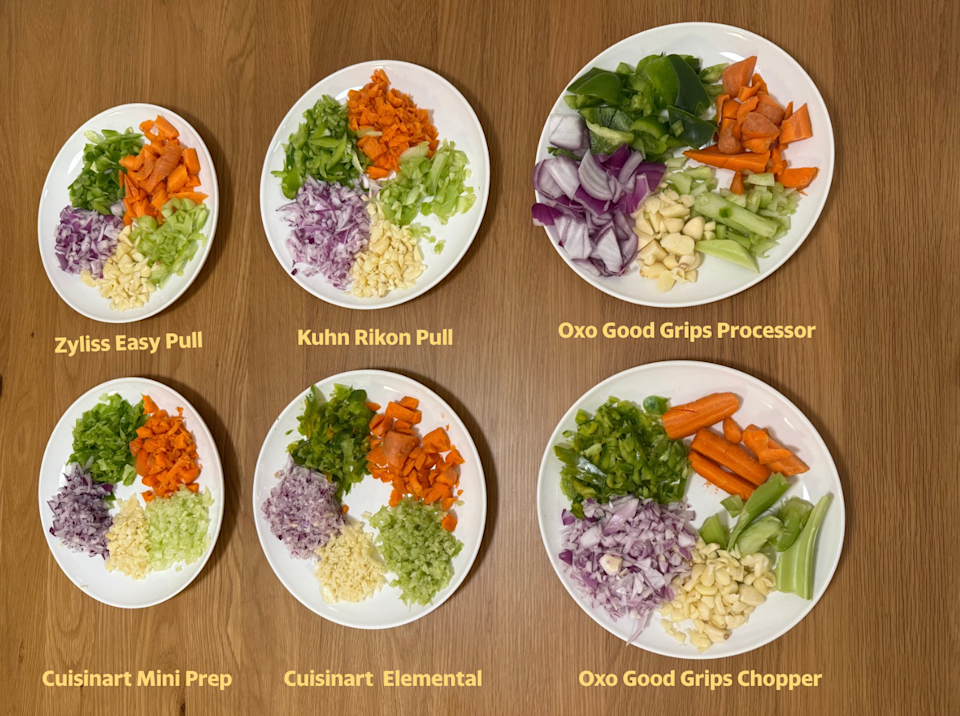
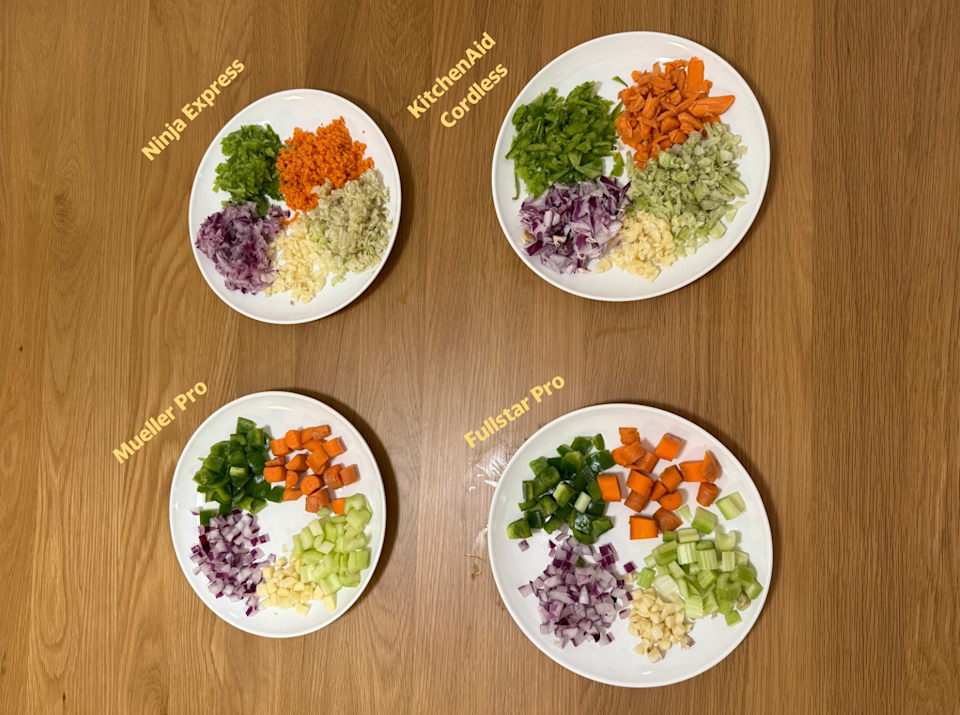
Sure, you could cut produce with a chef’s knife, but a reliable vegetable chopper makes even quicker work of slicing and dicing peppers, onions, zucchini, potatoes and more. These gadgets are so simple to use, they can make splurging on pricey pre-cut veggies a thing of the past.
To find the best vegetable choppers of 2025, I (a home writer with more than a decade’s worth of experience evaluating products, including kitchen tools like iced coffee makers and air fryers) procured 10 highly rated manual and electric choppers and food processors. I put them through the wringer, challenging their sharp, shiny blades against a bounty of produce, along with nuts, herbs and cheese to test their different functionalities. In the end, I landed on three that hit the sweet spot in terms of performance, maintenance and capacity.
Table of contents
Best vegetable choppers of 2025

Kristin Granero/Yahoo
Size: 9″D x 11″W x 6″H | Capacity: 4 cups | Power source: Electric (corded) | Speed settings: Two | Finishes: Stainless steel, brushed chrome, white, pink or metallic red | Dishwasher-safe: Yes (cup, lid and blade insert)
How it works: The Cuisinart Mini Prep Plus comes pretty much ready to go. To operate it, you just plug in the base and secure the cup and blade insert. Throw in your veggies, then lock the lid and press your desired speed setting button (“Chop” or “Grind”) to get things going.
Why it’s great: Like its name suggests, Cuisinart’s chopper is small but mighty. I consider it the ultimate prepping companion — making it easy to chop, grind, emulsify and purée.
It gobbled up green peppers, carrots, celery, garlic and red onion like nobody’s business, and with record speed: I gave every chopper I tested five pulses (or chops), but I really only needed two or three to achieve excellent results with this machine.
The Mini Prep Plus’s dual blades were able to slash and grind pecans, cashews and even pine nuts. Whipping up purées and gravies never came so easy: I threw in some olive oil, basil and parmesan cheese with the garlic and pine nuts and had myself a delicious homemade pesto that, in one bite, transported me back to a recent vacation in Italy.
This gadget is super low-maintenance (the cup, lid and blade insert go right in the dishwasher). And at 4 cups, it’s big enough to prep larger portions. It’s also fairly sleek and compact, taking up little room on my kitchen counter or in my cabinets. Did I mention it comes in a cornucopia of colors and finishes?
Who it’s for: Anyone looking for a high-powered (but not intimidating) machine to slice, dice and purée produce, nuts and herbs in a matter of seconds, and easily whip up homemade sauces and dressings.
- High capacity
- Two speed settings
- Available in five colors/finishes
$50 at Wayfair

Kristin Granero/Yahoo
Size: 5.51″D x 6.61″W x 10.39″H | Capacity: 5 cups | Power source: Battery (cordless) | Speed settings: Two | Finishes: Matte Black, Onyx Black, Empire Red, Passion Red, Contour Silver, Charcoal Gray or Blue Velvet | Dishwasher-safe: Yes (cup, lid and blade insert)
How it works: Like our top overall pick, the KitchenAid Cordless Food Chopper consists of a base, cup with handle, blade insert and lid. In this case, you charge the chopper ahead of time: The cord plugs into the front of the base, right next to the speed setting toggle. Once it’s charged, simply select your desired setting, add your ingredients to the cup, and ensure the cup and lid are securely locked into place. The power button is on top of the handle for convenience.
Why it’s great: KitchenAid’s chopper performed similarly to the Cuisinart veggie choppers I tested, except that it gave a slightly rougher chop to peppers, onions and garlic. It was able to grind pecans, cashews and pine nuts, and churn out bright green basil pieces, in a matter of five pulses.
It takes about two hours to achieve a full charge (similar to a smartphone and about half the time of a typical cordless vacuum, for reference), and the charge lasted through my testing. Being able to set the chopper up wherever I wanted — and maneuver it without a cord dangling — was incredibly freeing!
The KitchenAid chopper’s cup, blade insert and lid are dishwasher-safe for easy cleaning. It comes in seven (yes, seven!) colors and finishes. At 5 cups, this baby also has the highest capacity of any chopper on this list, which I’ve come to appreciate for batching chopped veggies for salads and omelettes.
Who it’s for: Making larger portions and anyone with limited outlets in their kitchen.
- High capacity
- Two speed settings
- Available in seven colors/finishes
- Cordless
$100 at Amazon

Kristin Granero/Yahoo
Size: 6.1″D x 5.31″W x 5.55″H | Capacity: 3 cups | Power source: Manual | Speed settings: N/A | Finishes: Charcoal Gray | Dishwasher-safe: Yes, all parts
How it works: When it comes to this compact gadget from Zyliss, all you have to do is ensure the blade insert is secured in the center of the cup, add your ingredients and close the lid. Then, pull the handle out and slightly up to start chopping.
Why it’s great: The Zyliss Easy Pull Food Processor is the little vegetable chopper that could, modest in its form but mighty in its function.
With five pulls of the string (to mimic five automated pulses or spins), it yielded slightly rough but still beautiful chops of green peppers, celery, garlic and red onion. The carrots were in what I’d consider ideal chunks for cooked soups and rice, or raw snacking. With some rearranging and a few more spins, I was able to achieve the same finer texture on the carrots as the other ingredients.
Zyliss’ pull-style processor chopped basil, pecans, cashews and even tiny pine nuts with ease (likely thanks to a plastic “sweeper” underneath the steel blades that helps surface smaller bits). And at 3.5 cups, it can hold several peppers at once, as long as you quarter them.
The gadget I tested is an updated version of Zyliss’s original red and white pull chopper, with an easier-to-pull handle. And while a manual vegetable chopper requires more effort than an automatic one, you’ll exert less energy on maneuvering and cleaning.
Who it’s for: Someone who doesn’t want to have to plug in another gadget and is comfortable using a tool that requires hand strength.
- Comfortable handle
- Portable and easy to store
$30 at Amazon

Kristin Granero/Yahoo
Size: 11.18″L x 5.47″W x 5.2″H | Capacity: 7.5 cups | Power source: Manual | Speed settings: N/A | Finishes: White/Charcoal | Dishwasher-safe: Yes, all parts
How it works: Mueller’s Chopper Pro is another manual chopper, but it works more like a press than a processor. You push vegetables through blades or grates to achieve defined shapes (which is why I also refer to this style as a stamp in the “how to choose” section below). The setup is a bit more complicated than our other top choppers. You have to snap the top onto the clear bin, then fit the top with your desired blade. There are blades for dicing, grating and slicing vegetables like you would with a mandolin. If you’re dicing, you use the lid that’s attached to the top to push the food through the blade.
Why it’s great: Of all the choppers I tested, this one from Mueller offers the most range: It lets you julienne, crinkle-cut, slice, grate and dice 1/4-inch and 1/2-inch chunks.
I used the small dicing grid to create tiny, uniform pieces of red onion and garlic. With the large dicing grid secured, I was able to chop small, uniform chunks of green pepper, carrot and celery.
While chopping was the main focus of this review, I also tested the bonus blades for grating cheese and slicing potatoes: The mandoline base and safety holder helped me feel more confident and stable. Thanks to this tool, homemade sweet potato “chips” have become one of my staples.
The various blades were easy to affix and lock in, and I didn’t have to exert too much energy to press foods through the dicing blade. As a bonus, all of the pieces go in the dishwasher, and it comes with a few brushes for cleaning.
Who it’s for: Anyone looking for a crisp chop and clean, symmetrical presentation, with the ability to slice and shred produce and cheeses as needed.
- 10-in-1 functionality
- Portable and easy to store
- Affordable
- Comes with cleaning tools
- Doesn’t process
- Takes more time and exertion to chop larger quantities of food
$26 at Amazon

Marinade maestro: The Cuisinart Mini Prep’s ability to whip up pesto and other sauces and dressings will make you feel like a pro. (Kristin Granero/Yahoo)
Factors to consider when choosing a vegetable chopper
Power source
-
Manual: These choppers use force from your hands or pulling a string to cut through veggies. They’re compact, portable and, in my experience, almost as effective and speedy as electric models. They also tend cost less and are more likely to be completely dishwasher safe, but you’ll need to use elbow grease. There are a few types of manual vegetable choppers:
-
Push-style: With this type chopper (like the Oxo Good Grips Vegetable Chopper), you typically press a top portion equipped with a blade into ingredients that are in a cup. I’ve found this style tends to work well for softer, smaller ingredients (like garlic). Harder, larger vegetables, like carrots and peppers, can get trapped in blade grooves.
-
Press: These choppers, like the Mueller, involve pressing food through a blade. They’re ideal for those who want their veggies cut into uniform shapes and sizes. This style can be difficult to use on thick, hard veggies, and because you’re bound by the confines of the blade, it may take more time and effort to use.
-
Pull string: Like with our top Zyliss pick, you pull a handle attached to a string that causes blades to rapidly spin, dicing and chopping ingredients
-
-
Electric: These choppers typically function with the press of a button and can be corded or cordless. They’re faster and more efficient than manual choppers, but because the bases are equipped with motors, they can’t go in the dishwasher, and they tend to be bulkier. Cordless choppers can go anywhere, but note that they’ll need to be charged in advance to work, and may need to be recharged if you’re doing a lot of meal prep.
-
Food processor-style: Most electric vegetable choppers are basically small food processors. They have rapidly spinning blades, in some cases with plastic “wipers,” to lift, slice, dice and even purée foods. They tend to be the quickest and most effective for chopping, and are ideal for whipping up sauces and dressings.
-
Capacity: Based on my experience, I’d recommend going with a 3-cup capacity or greater for accommodating larger fruit or veggie pieces, as well as for batching salad dressings and marinades.

Marinade maestro: The Cuisinart Mini Prep’s ability to whip up pesto and other sauces and dressings will make you feel like a pro. (Kristin Granero/Yahoo)
How we tested these vegetable choppers
I pitted each of these veggie choppers against the same number and size of ingredients. I kept the number of chops (or spins, or pulses) consistent and tested additional foods where needed if the chopper offered other functions. A quick snapshot of my grocery list:
-
For chopping: Green peppers, red onions, carrots, celery and garlic, cashews and pecans (all choppers)
-
For processing: Pine nuts and basil (Cuisinart, KitchenAid, Zyliss, Kuhn Rikon)
-
For slicing/shredding: Sweet potatoes and cheese (Mueller)
-
For spiraling: Cucumbers and zucchini (Fullstar)
I noted how effectively and quickly each chopper was able to churn out said ingredients, plus factors like ease of setup, cleaning and capacity.

Chopping block: I cut and portioned out onions, peppers, celery carrots and garlic to see how each chopper could handle them. (Kristin Granero/Yahoo)
Other vegetable choppers we tested
So many veggies, so little time! See how other vegetable choppers fared in my quest for the best:
Cuisinart Elemental Chopper/Grinder: Cuisinart’s Elemental chopper performed on par with the brand’s Mini Prep Plus in my testing, and similarly features two speed settings (it’s also cheaper). But I appreciated the Mini Prep Plus’s generous cord length (it’s about twice as long) and the more compact base, saving me counter and storage space.
Ninja Food Chopper Express: Ninja’s Food Chopper Express lives up to its name. It chopped ingredients in as little time as the Cuisinart models I tested (in some cases, it only took two tor three spins), and was the best equipped among those I tested to handle (read: pulverize) carrots. It’s easy to use, but the 2-cup capacity may not work for larger food pieces or portions.

End game: Each plate shows vegetables cut by a different chopper after five chops, pulses or spins. (Kristin Granero/Yahoo)
Kuhn Rikon Pull Chop Chopper/Manual Food Processor: This manual chopper is similar in form to Zyliss’s version, performing slightly better when it came to carrots and slightly worse when it came to the pine nuts (likely due to its lowest blade sitting higher than Zyliss’s “sweeper” blade). It’s comparable from a cost perspective, but I ultimately went with Zyliss because it features an extra blade, and I found the pull to be a tad more comfortable.
Oxo Good Grips Manual Food Processor: This manual food chopper/processor from Oxo Good Grips has a high capacity. I like how every piece is dishwasher-safe and the rubber lining the bottom of the base keeps it in place. It felt like more work than the Zyliss chopper to achieve similar results for the green pepper, onion, basil and nuts, and it required more spins to get the carrots, celery and garlic to the same consistency.
Oxo Good Grips Vegetable Chopper: This press-style vegetable chopper from Oxo features a zig-zagged blade that chops into vegetables. It performed well when it came to smaller ingredients (herbs, nuts and garlic), but I found that bigger vegetable chunks (green peppers, onions and carrots) got caught within the blade’s “maze.”
Fullstar Vegetable Chopper and Spiralizer: This veggie chopper features the same two dicing grates as Mueller’s, offering similar proficiency. I chose Mueller’s version as my top pick because it offered more blades and greater capacity at the same price point.

Fantastic Four: Each of these choppers did a solid job at dicing veggies. (Kristin Granero/Yahoo)
Vegetable chopper FAQs
How do you use a vegetable chopper?
Press-style choppers will typically consist of a top (or cover, with blade) that you press into a veggie-filled cup. Processor-style choppers typically feature a cup with a multi-bladed piece at the bottom, along with a lid. Those that are electric have a motorized base, and can be controlled (or spun) with the tap of a button. Manual processors usually have a string that you pull, or handle that you churn, to spin and chop the ingredients without having to plug anything in. No matter the style, you’ll want to be careful when handling the sharp blades.
What is better: the Mueller or Fullstar vegetable slicer?
Both Mueller and Fullstar vegetable slicers are press-style vegetable slicers. The lid opens up so you can push veggies through the blades. We rated the Mueller as a top pick because it came with six additional blades for slicing and grating, whereas the Fullstar version I tested came with just two additional blades for spiraling and ribboning. Aside from offering more blades, the Mueller version I tested had a larger bin, with a capacity of 7.5 cups compared to Fullstar’s 4 cups, which allowed me to chop more veggies in one session.
What do restaurants use to chop vegetables?
In short, it depends on the restaurant, chef and demand. While some chefs might take pride in hand-cutting their vegetables, especially in small quantities, restaurants that tend to chop, shred or slice a lot of vegetables may look to commercial vegetable choppers to help streamline things.
A high-capacity processor like those featured in my top picks should prove a big help when it comes to automating chopping and puréeing. If you’re looking for an automated shredder, I’ve seen this gourmet drum grater from Zyliss (also available with slicing functionality) in action and I was blown away by its power, precision and speed.
We received complimentary samples of some products and purchased others ourselves, but we reviewed all products using the same objective criteria.
